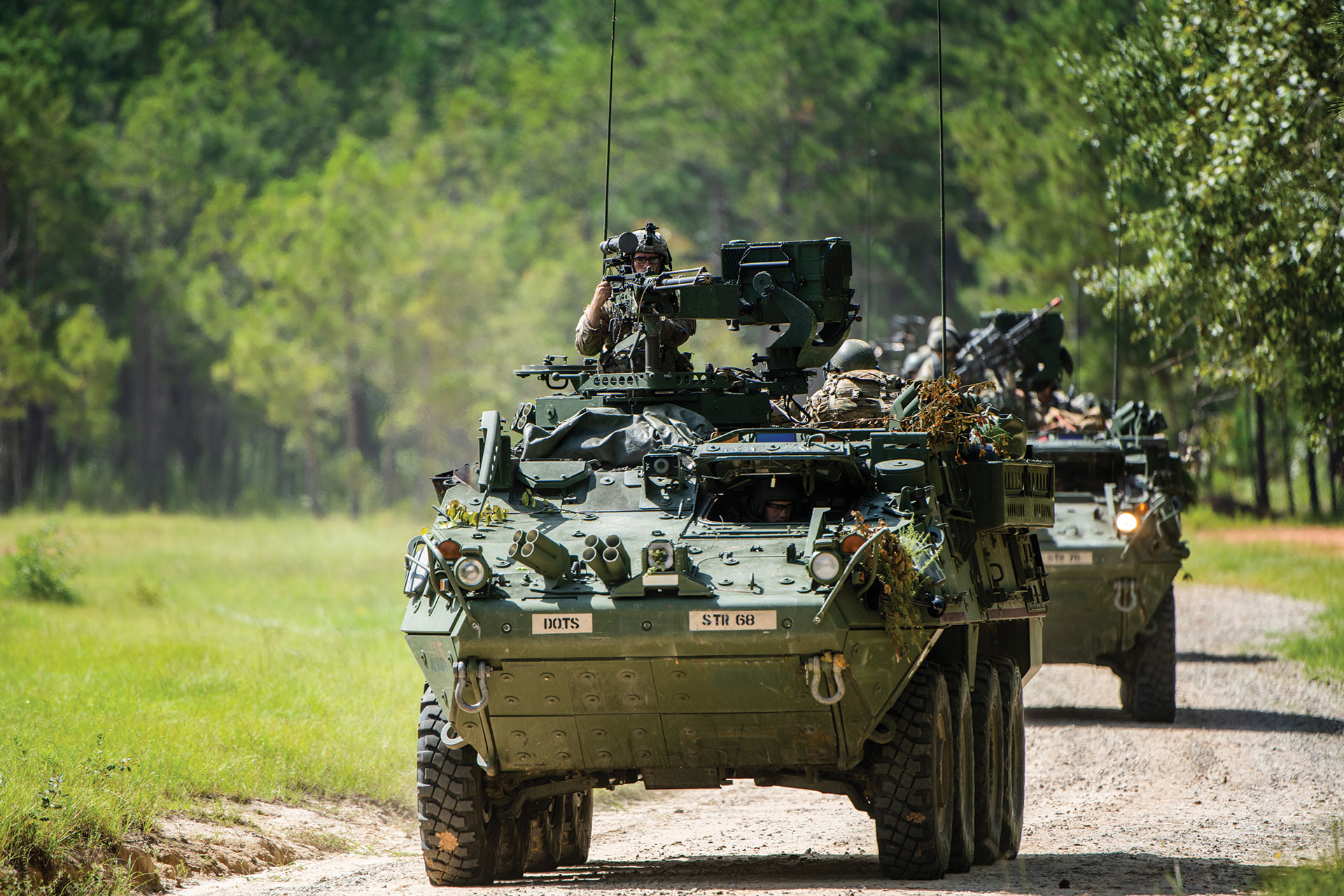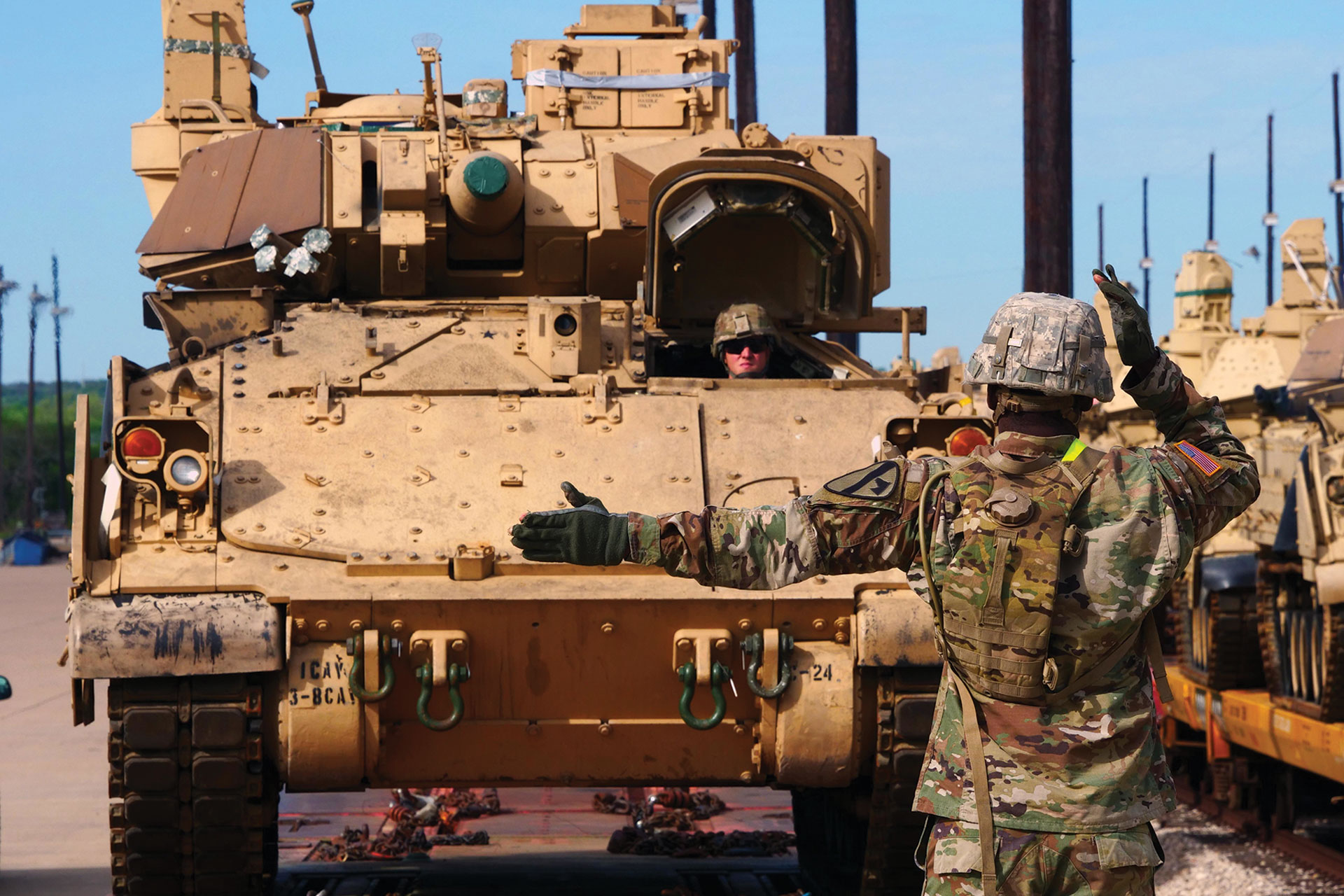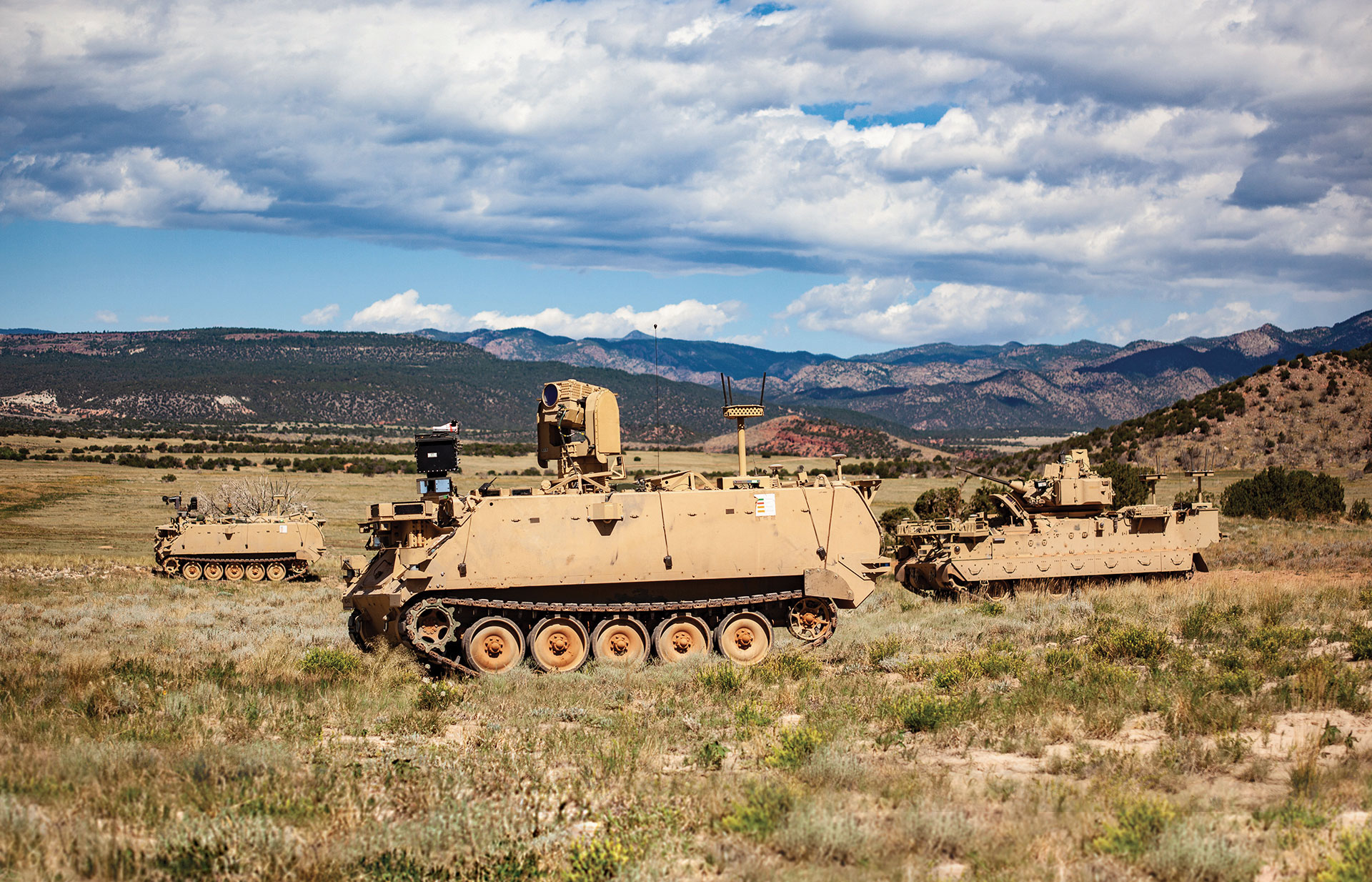
WHO IS THE CUSTOMER?: This simple answer—the warfighter—fails to recognize the program manager’s balancing of a program’s cost, schedule and performance, and fails to acknowledge the complex acquisition environment.
For non-acquisition professionals, it’s unfathomable that acquisition professionals find this difficult to answer.
by Robert F. Mortlock, Ph.D., Col., USA (Ret.)
Really, are you serious? Many might automatically jump to provide the easy and obvious answer: the warfighter. The warfighter is the ultimate customer, meaning the beneficiary, of most defense acquisition efforts.
This is not debatable; however, this answer is naive and too simplistic to be useful. It fails to appreciate the complexities of navigating big “A” acquisition, which is composed of the Adaptive Acquisition Framework, the resourcing system (planning, programming and budgeting and execution), and a requirements process—in most cases through the Joint Capabilities Integration and Development System.
This simple answer also fails to recognize the program manager’s triple constraint of balancing a program’s cost, schedule and performance baseline. Finally, it fails to acknowledge the complex acquisition environment consisting broadly of a set of key stakeholders including Congress, service leadership, industry partners, users and the acquisition program chain of command.
The concept of “know your customer” or “understand your customer’s requirements” is fundamental to the success of any service industry. Defense acquisition is basically a service industry with the mission of providing combat capability to the warfighter. Implied within this mission is that defense acquisition can define its customer. If acquisition programs can’t define their customer more specifically than “the warfighter,” then how could they efficiently and effectively succeed in their mission?
According to “The Defense Acquisition System,” Department of Defense Directive 5000.01, the acquisition system provides “effective, affordable, and timely systems to the users” with the “primary objective of defense acquisition to acquire quality products that satisfy user needs with measurable improvements to mission capability and operational support, in a timely manner, and at a fair and reasonable price.” (Emphasis added.) The term “user” is synonymous with “warfighter” when referring to desired operational capabilities.
Embedded and implied in the purpose and objective of defense acquisition is the concept of delivering products and services of the desired quality. A fundamental principle of quality is an understanding that quality (and thereby value) is defined by the customer. For acquisition, the customer is the end user (that is, the warfighter) of the product or service, who also determines whether the product or services provide the required value.

STRYKING OUT: Students in the Scout Leader Course at Fort Benning drive M1126 Stryker Combat Vehicles. Knowing your customer and understanding your customer’s requirements are fundamental to the success of any service industry. (Photo by Patrick A. Albright, Maneuver Center of Excellence and Fort Benning Public Affairs)
IT DEPENDS AND IT’S COMPLICATED
In the 15th Annual Acquisition Research Symposium on May 9, 2018, Anne Rung, as the director of government sector for Amazon Business and as the former U.S. chief acquisition officer under President Barack Obama, presented her insights into the challenges facing federal acquisitions.
Rung highlighted that one key to success in acquisition, whether in the federal government or in a commercial industry, was first listening to the customer (getting early input and continuous feedback) and truly understanding the customer’s requirements. Amazon obviously has mastered the art of delivering what the customer wants and providing value to its customers. During the question-and-answer part of the symposium, several questions centered around the differences between private sector and public sector acquisition, such as, “Who is the customer in defense acquisition?”
The collective group of hundreds of the most experienced acquisition professionals and researchers struggled to agree on a definition of the customer. Probably the most basic formula for success in commercial industry was somehow not universally understood by acquisition professionals. Why is this question difficult to answer for acquisition professionals? Because, of course, the answer is, “It depends, and it’s complicated.”
During the subsequent symposium proceedings, several senior defense acquisition leaders passionately attempted to clear up any misunderstanding by stating that defense acquisition knows that the warfighter is the customer. But is it that simple? Why the confusion?

INPUT, FEEDBACK FIRST: Whether in commercial industry or in the federal government, one key to success in acquisition is first getting early input and continuous feedback from the customer and truly understanding the customer’s requirements. (Photo by Capt. Scott Kuhn, 3rd Armored Brigade Combat Team, 1st Cavalry Division)
THE USER PERSPECTIVE
I’m surprised by how many times the inability to answer this simple question for acquisition programs has led to a lack of unity of effort (one of the principles of war that also applies to acquisition management) and has resulted in a higher risk of acquisition failure. The first example comes from my own experience as I prepared for duties after being Department of the Army centrally-selected as the product manager for the Infantry Carrier Vehicle, Medical Vehicle, and Field Recovery and Maintenance Vehicle in the Future Combat Systems (FCS) program office.
Before assuming the product-office charter, I attended the infantry pre-command course at Fort Benning, Georgia—home of the infantry. As the only acquisition officer in this course, I felt both humbled and honored to be attending the same course as the Army’s future infantry battalion and brigade commanders. On the first day, we had a reception to meet the infantry school commandant and Fort Benning commanding general.
I could not have been prouder to represent the Army Acquisition Corps. Each officer in the course stated the command they were to assume, and I introduced myself as the next Infantry Carrier Vehicle product manager. The commandant very politely but matter-of-factly asked me why the vehicle didn’t have a manned turret like the Bradley Fighting Vehicle it was replacing. He followed by stating that the vehicle commander’s eyeballs were the best reconnaissance and surveillance systems and yet the Infantry Carrier Vehicle did not allow a mechanized infantryman to “pop a hatch” and scan the vehicle’s surroundings.
Already feeling a bit intimidated and resisting the urge to defend the Army-approved requirements, I stumbled through a response and stated what great points the general had made.
But I understood right then that I was about to take the lead for the development, testing and production of one of the Army’s highest priority acquisition programs, and Fort Benning (or at least its top officer) was not a proponent. I thought to myself that this would be an interesting three years. Wasn’t Fort Benning the customer? Or was the general the customer? Or were the infantry battalion and brigade commanders the customers? Or was each mechanized infantryman the customer?
The Army assigned a U.S. Army Training and Doctrine Command capability manager to represent the user, lead the requirements-definition activities and serve as the liaison office between the users and the acquisition program office. The Army Requirements Oversight Committee (AROC) approved the requirements for the vehicle in a capabilities-development document. How could the Army not include the requirement for a manned turret if that was the top priority for Fort Benning’s commander?
It’s important to put the Infantry Carrier Vehicle acquisition effort in the proper context. The vehicle was part of a family of eight manned ground vehicles within the planned Future Combat Systems Brigade Combat Team construct for the Army Future Force. The FCS program entered the acquisition framework as an official program of record at Milestone B to begin engineering and manufacturing development efforts in 2003, with a planned Milestone C (low-rate initial production) in 2010.
The experience mentioned above occurred in 2007—four years into the engineering and manufacturing development phase and well past the point of questioning the basic requirements. A year later, the same Benning commandant test-drove a prototype of the Infantry Carrier Vehicle in the contractor test facility (parking lot). The FCS Program Office had hopes of turning him into a proponent. He was impressed with the design progress but became nauseated after a 10-minute test drive. For maximum force protection and survivability of the vehicle crew, the new vehicle’s requirements called for it to be driven by computer screen from inside the vehicle. Despite high resolution cameras, some latency existed between what the driver’s eyes saw on the computer screen and what the driver’s body felt. Proper training of drivers can overcome this phenomenon. However, the program’s attempt to create an advocate in the general failed. And again, I was left with the same question: Who’s the customer?

VEHICLES OF THE FUTURE: A Mission Enabling Technologies – Demonstrator, rear, and two Robotic Combat Vehicles maneuver through a Fort Carson, Colorado, training area in early July at the control of Soldiers from 4th Infantry Division. But before such vehicles can be utilized, basic questions need to be answered. Why does a mechanized infantry vehicle need to be operated remotely? Under what conditions would the main gun be fired remotely, and when, on the battlefield, would that ever occur? (Photo courtesy of Ground Vehicle System Center)
MORE ADVENTURES IN DEVELOPMENT
The Army canceled the FCS program in 2009 and embarked on the Ground Combat Vehicle program to replace the Bradley. I was one of the first product managers for the Ground Combat Vehicle effort, specifically charged to work with the requirements community to ensure the requirements for the newly envisioned Bradley replacement were technically achievable and affordable. At the time, Fort Benning served as the home of the infantry, and Fort Knox, Kentucky, served as the home of armor. The resources that had supported the oversight and management of the development of a family of eight FCS manned ground vehicles were now applied to the development of the Ground Combat Vehicle. The Army designated Fort Knox as the lead in the defining its requirements. The program pushed for a materiel development decision and Milestone A in 2010 to begin awarding technical-maturation and risk-reduction contracts to industry. The same two industry partners that were teamed together in the FCS engineering, manufacturing and development phase for manned ground vehicles now competed against each other in a technical-maturation and risk-reduction phase for the Ground Combat Vehicle.
Again, not clearly defining the customer plagued a Bradley-replacement acquisition effort. The Army put the Armor School in charge of the Ground Combat Vehicle requirements. Based on the requirements, the program office, the interested industry competitors and engineers at the research, development and engineering center at the Tank and Automotive Command, all agreed that the Ground Combat Vehicle would weigh between 50 and 70 tons—nearing the weight of the 72-ton M1A2 Abrams tank and almost twice as heavy as the 30-ton Bradley or previously planned 30-ton Infantry Carrier Vehicle.
NEVERTHELESS, THE ARMY PERSISTED
The new vehicle had force protection, survivability and lethality requirements for a mechanized infantry vehicle written by non-infantrymen. In subsequent reviews with the Headquarters Department of the Army staff (including the vice chief of staff of the Army), the potential weight of the Ground Combat Vehicle and excessive requirements were highlighted. However, the Army pushed ahead and awarded two contracts based on schedule pressure and to protect the planned and programmed resources of the old FCS manned ground vehicle program.
Who was the customer of the materiel-development decision or Milestone A review for the Ground Combat Vehicle program? Four years later, the Army canceled the Ground Combat Vehicle program because the vehicle was going to be too big and heavy and had excessive requirements. The effort was not focused on the mechanized infantryman—it was focused on other Army priorities.
In recent years, after several failed attempts at initiating the Next Generation Combat Vehicle, the Army is trying again—this time calling the Bradley replacement the Optionally Manned Fighting Vehicle. I have doubts, however, that the Army has solved the problem of defining the customer.
Does a mechanized infantry vehicle really need to be operated remotely? What’s the benefit of driving it remotely? What are the tactics, techniques and procedures to fire the main gun remotely, and when, on the battlefield, would that ever occur?
The vehicle crew is unprotected while outside the vehicle and firing the main gun. That’s a very inefficient lethality system because the parts of the vehicle used to protect the crew and protect the troops being transported are unnecessary for that mission. So, in the end, the Optionally Manned Fighting Vehicle won’t be an optimized troop transport carrier or an optimized lethality system.
Is this what the customer wants to replace the Bradley, or is the Army more interested on riding the autonomous vehicle hype? Is the customer defined? Is the customer defining the Optionally Manned Fighting Vehicle value and quality? Or does the Army have other priorities, like proving the value of the newly established Army Futures Command or the high-profile, newly established Next Generation Combat Vehicle Cross-Functional Team?
The leaders and professionals in these offices are extremely dedicated to the mission, intellectually capable and technologically savvy. However, they are working on an effort that has struggled in the past to properly define its customer—jeopardizing their hard work and the potential success of the effort.
CONCLUSION
Recent acquisition reform initiatives have incrementally improved defense acquisition. Examples include the empowering of the services for their own acquisition programs, the adoption of the Adaptive Acquisition Framework and the emphasis on the use of other-transaction authorities when appropriate. However, until defense acquisition addresses the challenge of properly defining the customer for acquisition efforts, obtaining the desired acquisition outcomes may be challenging.
Putting in the effort upfront and early to specifically define the customer and determine who best represents the customer will pay dividends in getting improved capability to the warfighter. Leadership, open lines of communication, collaboration between subject matter experts and transparency with stakeholders will provide the unity of effort and establish the trust needed for the acquisition efforts to be successful at delivering improved warfighting capability at the speed demanded by rapidly changing threats while capitalizing on technological advances.
ROBERT F. MORTLOCK, Ph.D., Col., USA (Ret.) managed defense systems development and acquisition efforts for the last 15 of his 27 years in the U.S. Army. He’s now a professor of the practice and principal investigator of the Acquisition Research Program in the Graduate School of Defense Management at the Naval Postgraduate School in Monterey, California. He holds a Ph.D. in chemical engineering from the University of California, Berkeley, an MBA from Webster University, an M.S. in national resource strategy from the Industrial College of the Armed Forces and a B.S. in chemical engineering from Lehigh University. He holds DAWIA Level III certifications in program management, test and evaluation, and engineering, as well as the Project Management Professional and Program Management Professional credentials.
Read the full article in the Winter 2021 issue of Army AL&T magazine.
Subscribe to Army AL&T – the premier source of Army acquisition news and information.
![]()







